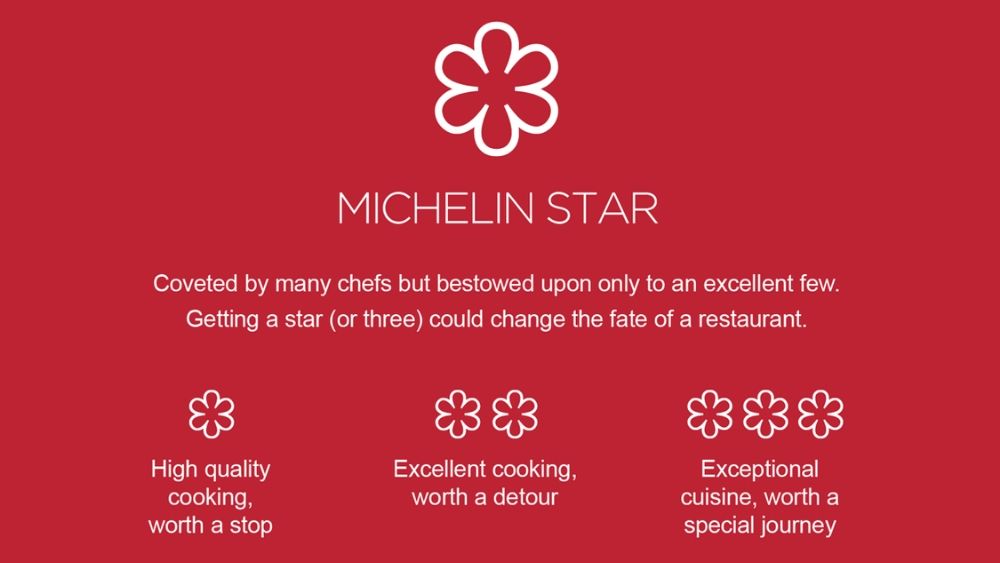Most people are familiar with the concept of the Michelin star. The prestigious and highly coveted award bestowed upon Europe’s finest restaurants. However, very few people know the history of the award or how star designations are determined. This article provides a brief explanation of both in order to clarify this mysterious concept.
The Michelin star system was first established in 1926 when the Michelin Tyre Company’s travel guide began to exhibit a decidedly gastronomical bent. First published in 1900 by André Michelin, the Michelin Guide originally helped tourists visiting France find acceptable lodging, restaurants, and car service stations. Now referred to as the Guide Rouge, the tome exclusively focuses on European dining options (although some editions cover restaurants in other regions). The Guide Rouge is a hallowed tome among chefs, restaurateurs, culinary experts, and the dining public. The restaurants that receive their star awards benefit greatly from enhanced media coverage and patronage.
How to Determine Michelin Star Ratings
To determine Michelin Star ratings, a well-trained team of Michelin inspectors visits each restaurant approximately once every 18 months. Exceptions include restaurants moving up or down in ranking, for example, a one-star candidate receives four annual visits, and a two-star restaurant receives 10 visits before becoming a three-star. Visits take place anonymously, and Michelin picks up the check. The inspectors write a report on every meal, scoring service, décor and location, and plotting cuisine quality on a standardized graph. One star denotes very good cooking and recommends trying the food there if the restaurant is on your path. Two stars denote excellent cooking worth a detour. Finally, three stars represent exceptional cuisine “worth a journey.” Of course, the fine wines, flawless service, and elegant surroundings of a Michelin three-star establishment also come with a formidable price tag.

Guide Rouge and Rising Stars
In addition to the traditional stars, the Guide Rouge also awards Rising Stars. These indicate the potential to qualify for an initial star or an additional star. Since 1955, the Guide has also bestowed the “Bib Gourmand” designation on restaurants offering “good food at moderate prices.” These restaurants must offer menu items priced below a maximum determined by local economic standards. They are also denoted in the Guide with coin symbols next to their entries. Fork and spoon symbols next to each Guide entry denote overall comfort and quality ratings. Additionally, the grapes indicate at minimum a “somewhat interesting” wine list.
Some people may accuse the Michelin Star of being an outdated, classical French-centric fossil. However, it’s still the only international system for evaluating haute cuisine. It’s undeniable that chefs around the world vie to obtains stars for their restaurants. They are crushed when one of their establishments loses a star. Until another company can assemble 70+ of the world’s best trained and experienced inspectors, put together comprehensive books listing Europe and other regions’ top restaurants, and convince chefs and the public to pay attention, the Guide Rouge will continue to reign supreme as the bible of culinary review literature.
How I can Help
So are you ready to get your first Michelin star? I can offer you leadership coaching with culinary insight and restaurant consultancy to help you reach your dream.
Book a free 30-minute consultation. To acquire new skills, visit our Online Culinary School and start making change.
